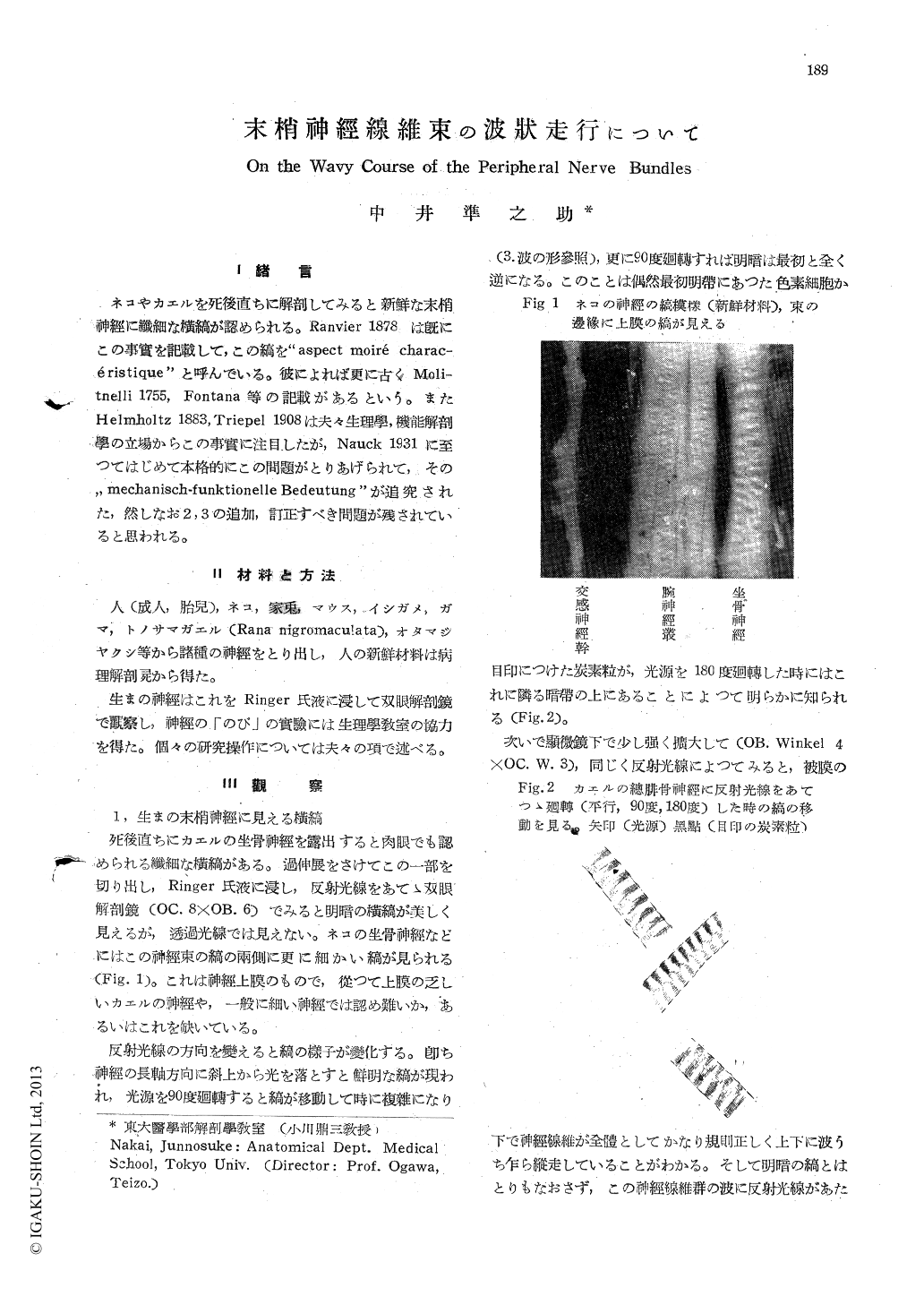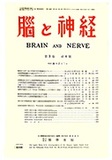Japanese
English
- 有料閲覧
- Abstract 文献概要
- 1ページ目 Look Inside
I 緒言
ネコやカエルを死後直ちに解剖してみると新鮮な末梢神經に纖細な横縞が認められる。Ranvier1878 は既にこの事實を記載して,この縞を"aspect moiré charac-éristique"と呼んでいる。彼によれば更に古くMoli-tnelli 1755, Fontana等の記載があるという。またHelmholtz 1883, Triepel 1908は夫々生理學,機能解剖學の立場からこの事實に注目したが,Nauck 1931に至つてはじめて本格的にこの問題がとりあげられて,その"mechanisch-funktionelle Bedeutung"が追究された,然しなお2,3の追加,訂正すべき問題が残されていると思われる。
The fresh peripheral nerves show usually fine transversal stripes recognizable even with the naked eye. As these stripes disappear by stretching nerves, they have certainly the cau-sal nexus with the wavy course. The fine undulation of nerve fibers causes by reflection of light the transverse stripes with darker and lighter parts arranged successively. Ran-vier (1878) described these phenomena briefly and Nauck (1931) studied this problem in details. Several points upon this problem were revised and extended in this work.
Generally speaking, the amplitude of the waves is in proportion to the diameter of the nerve bundle. But in case of a relatively thick bundle separated by perineurium into several thinner ones, each of the latters shows finer stripes corresponding to its proper thickness. With almost all of the peripheral nerves, both myelinated and unmyelinated, preient the wavy course, the facial nerve passing through the canal of the temporal bone, the chords tym-pani, the n. alveolaris mandibularis, the Ⅲ-VI thoracal nerve of the tortoise, the intra-corneal nerves of rabbits etc., which are all safely protected from outer mechanical forces go straightly. The sciatic nerve of the human fetus of 15cm S.S.L., does not show the stripes, but in the fetus of 25cm S.S.L., the wavy co-urse is seen as observed by Nauck. Then I stretched these wavy nerves to see when the stripes disappear. The extension of 15-20% led to disappearance of the stripes (5-7% Triepel, Nauck). And the impulse conducting function of the nerves was examined by the oscillograph (cooperated by Mr. E. Mazima, Physiol, Dept. Tokyo Univ.) and it was assured that until the above-mentioned rate of exten-sion the nerve fibers did not lose their physiological function.
Nauck took the elastic fibers in the epineu-rium for the cause of the wavy course but I believe he was not correct in this matter, because I have observed the wavy course even in the intracranial cerebral nerves of which he stated that the non-existence of the stripes goes parallel with the absence of elastic fibers in the epineurium. So the real cause of the wavy course seems to lie otherwise.

Copyright © 1951, Igaku-Shoin Ltd. All rights reserved.


